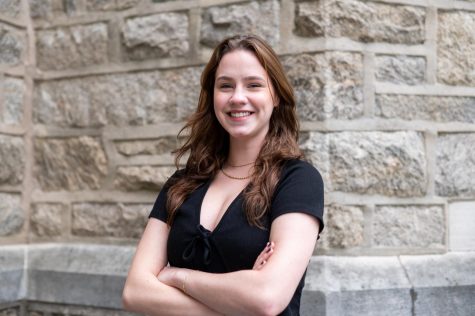Community Joins a Student-Hosted Open Forum Discussing Armed Police on Campus
November 18, 2020
On Nov. 12, a forum was held virtually for students to discuss and share ideas about policing on campus. The effort was organized by Em Friedman, a graduate assistant in the Gender and Women’s Studies Department, Daryl Jucar representing Get Woke Nova, Kashae Garland of VU Pride, the Student Government Association, the Director for the Office of Diversity, Equity and Inclusion and William Horne from the Villanova Anti-Racist Alliance.
Each group, represented by the individuals above, joined the forum due to its beliefs in ending police violence, especially racially-biased offences, against Black, Indigenous and students of color.
Students joining the forum were encouraged to share personal experiences, voice concerns regarding the University’s campus police and develop a plan for the future to address these concerns. Friedman from the Department of Gender and Women’s studies voiced her hopes of forming a coalition after the discussion in order to disarm campus police and curb investments into policing and prisons.
“Villanova, I have noticed, is a more conservative school and I believe that inhibits organizing,” Friedman said. “I come from the SUNY schools where there is a really strong student organizing thread. Part of having this conversation was to open up the discussion for students and better understand what is going on.”
Students who joined the forum were provided background about the Public Safety Department at the University prior to discussion. It was noted Public Safety employs 67 individuals, including 11 sworn police officers. The main issues discussed were having armed guards on campus, too much funding allocated to the department and policing disproportionately affecting various groups on campus.
The forum began with Friedman introducing herself and inviting all participants to speak freely about their opinions and thoughts. Students were then invited to introduce themselves and explain their reasons for attending the event. Answers varied across students and departments represented. Notably, there were students of color who joined the forum in order to expose the negative experiences they have had with campus police. There were also a handful of Resident Advisors who voiced their discomfort in being trained to call the campus police for certain incidents.
One Resident Advisor, who was also a student of color, explained that she is not comfortable interacting with police officers, and therefore she does not always feel comfortable handing a situation over to them. Other students were simply at the forum as allies and listeners to better understand the ongoing situation at the University.
After introductions, Friedman explained that one of the most voiced concerns she heard from the group was the question of having armed guards on campus.
“Why there are armed police on campus is kind of unclear, and a lot of universities have been struggling with the same question,” Friedman said.“Nationally, we are in a time where we are seeing how overfunded police are, and it is sort of an untouchable position. People feel really ideologically invested in policing.”
The forum continued with further discussion, and more students voiced their concerns about the University’s policing.
A list was created by Friedman as discussion went on, which included issues such as Resident Advisors being told they receive more human interaction training than Public Safety officers, students of color being racially profiled on campus, armed guards creating an illusion of safety, a lack of transparency and more. Once the issues were formatted into an organized list, the next step was brainstorming a plan to deal with these concerns.
One of the initial steps spoken about was educating students about the problem and explaining exactly why it is considered problematic by students. The group discussed the importance of having the issues defined before progressing with any action. More so, the discussion included having a network built with the right people who can support the movement.
Students also agreed that students of color should be at the center of discussions but not the only individuals with work to do. Finally, students took time to look at other universities where coalitions were successful and learn from these situations.











